The Integration of Oxygen into Water - Master Patent -
Written by Guy Montpetit
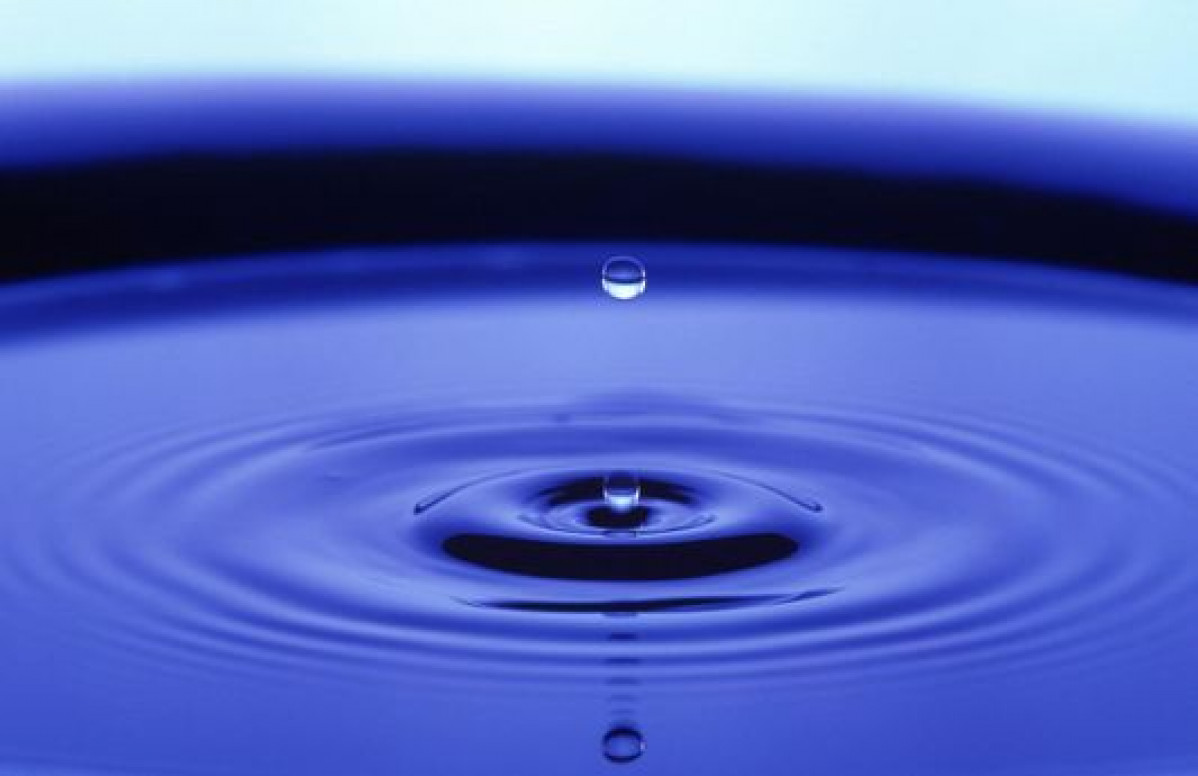
In the same manner we have obtained two Master Patents that have been recognized as such by the PCT in Geneva, by the European Patent Office (EP), and the Patent offices of the most important countries like USA, China, Japan, India, Canada, Brazil, Mexico. The first three level of examiners, (PCT, EP and US) bear consequence for all countries, and they have confirmed to us the fact that our discoveries were patentable as Master Patents, by the uniqueness of their character. They made it official by the delivery of Patent certificates. (See page 27). Based on these patents we were able to patent a great number of other applications all related to the Masters that will soon be called to play a major role in our societies.
The Great Opportunity of the Master Patent – Breakthrough Technology
Nature of the Patent vs. the Law of William Henry
The Law of William Henry (1774 – 1836)
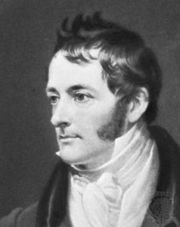
The English physicist and chemist from Manchester proclaimed the following scientific law at the beginning of the 19th century:
At constant temperature and saturation, the concentration of a gas dissolved into a liquid (C) is proportional to the partial pressure (P) exercised by the gas on the liquid.
C = HP
If we take the example of the dissolution of oxygen into ultra pure water, i.e., in total absence of minerals, we would observe that at 0° Celsius and at one atmosphere of pressure, we find a maximum of 14,6 parts per million of oxygen into water.
This law applies to the dissolutions of any gas into any fluid but with different results depending on the nature of the gas and fluid involved in the dissolution.
The dissolution of gas into water has extraordinary consequences for the waters of nature, were these gases to be indispensable to aquatic life like oxygen or carbon oxides or toxic like H2S. We distinguish between low soluble gases that produce non-electrolyte molecular solutions - with those dissolutions that are accompanied with true chemical reactions (acid base or oxydoreduction). The later are generally much more soluble into water. For this class of gas, we observe that for a given pressure and temperature, the maximum solubility is expressed as the volume of gas dissolved into one (1) liter of solution. For calculation purposes, the volume of the dissolved gas is reduced to the following normal conditions: 0°C and 760 mm of Hg. For example, CO2 (1500 mg/l) is more soluble into water than is oxygen (40,30 mg/l) – always at 0°C and at 760 mm of Hg atmospheric pressure. Consider the fact that oxygen is classified as a low soluble gas.
The influence of temperature!
The dissolution of low soluble gas is exothermal. If we raise the temperature, the dissolution is therefore unfavorable. This phenomenon is particularly important in the case of oxygen whose solubility is reduced by half between 0°C and 30°C. Consequently if we raise the temperature of a solution that had already reached its equilibrium, the excess of oxygen corresponding to the difference of solubility – between the initial temperature and the final temperature – must eliminate itself and we observe the phenomenon of degassing. Therefore, when we analyze the content of oxygen in water, we must take all necessary precautions to prevent the degassing phenomenon, in particular by strictly maintaining the constant temperature of the samplings.
The influence of pressure!
Also necessary is to understand an old physics Law like the Law of Henry that states: the dissolution of a gas is accompanied by a large diminution of volume. Therefore an augmentation of pressure will favor this dissolution. In fact, the quantity of gas that can be dissolved in a certain volume of liquid is, at constant temperature, directly proportional to the pressure exercised by this gas over the solution. This is particularly true for relatively low pressures.
The influence of dissolved salts!
When water contains important quantities of salts, the solubility of the gas is diminished. At 15°C, the solubility of oxygen in pure water in the presence of air saturated with humidity, is 10,2 mg/l; the solubility becomes 9,7 mg/l for a water containing 5 g/l of NaCl and of 8,1 mg/l for a water containing 10 g/l of NaCl. To compute the solubility of oxygen into air, we must know the barometric pressure, subtract the vapor pressure at the considered temperature, and compute then the partial pressure of the oxygen. We must also take into consideration the average atmospheric pressure that varies according to the altitude of the considered environment.
Where does the Henry’s Law apply? To name just a few:
Petroleum extraction
Geological and atmospheric phenomenon
Chromatographic analysis
Membrane processes
Heterogeneous catalysis
Body fluids count for example the content of N2 in the blood
Many other applications – a few of which are described below
This law is also in effect at the nanoscopic scale, in which case the solubility of a gas is augmented by a factor of up to thirteen (13) times, by the addition of chélatées solutions.
The Nature of our patents
Our Master Patents sustain a series of patents that touch the integration and fixation of any gas into any fluid, to a level of ten (10) times the law of Henry. This important discovery which is related to a number of little known functions by most scientists, like Triboelectricity, brings us to the rediscovery of the overall span of that law which cannot sustain this new environment. Our patents also put into question many other laws of traditional physics like the law of Raoult. We will talk of Triboelectricity on page 15 and after.
Imagine that we can integrate and fix one or many gas like oxygen into a fluid, say water, at a ratio ten (10) times more then predicted by the law of Henry. All of this while procuring to the water an exceptional and new antioxidant character; filled with oxygen, one could have expected the water to become oxidant, and now, with this new property of antioxidant, oxygenated water becomes capable of neutralizing free radicals, central to the debate surrounding cancer and aging to name just a few fundamental contemporary questions.
The exceptional phenomenon of the reduction of the surface tension of the electrons
By lowering the surface tension of electrons, we generally observe the following phenomenon:
An augmentation of the penetrating power of solvents
A lowering of the ionic friction – with enormous consequences in the domain of semi-conductors where we could augment ionic mobility
An augmentation of the fluidity potential
An acceleration of the precipitation power
A reduction of the evaporation power
An augmentation of the longevity of membranes
An augmentation of the filtration debit by unity of surface of membranes
An augmentation of the separation debit of membranes by unity of surface
An augmentation of the suppression process for the elimination of odors
A reduction of the DO (demand in oxygen) of bacterial micro-organisms

The central phenomenon observable by the very nature of the patent is that the surface tension of the fluid is radically lowered to a very low level. Here are some practical examples in different industries; in pharmaceutics, we can utilize this application in the integration and absorption of medications, in agriculture, the reduction of fertilizers, the augmentation of nutrients and in the big industry, the reduction of chemical products made possible by the new penetrating power of the fluid.
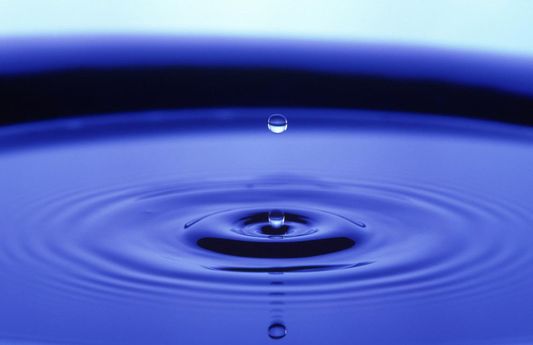
This absorption allows for the reduction of important costs of the mixed products. The windfall profits are expected in the fields of neutraceutics, pharmaceutics, food growth, agriculture, aquaculture, petroleum domain, treatment of waters and air and all industrial processes of big industry. Finally, the effects are present in all layers of society. We will propose a few new areas of research in this presentation.
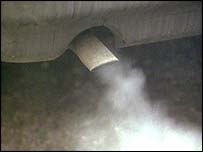
Of course we have discussed only one gas and one fluid, oxygen and water. But the combination of gas and fluids has many more applications with social impacts of great significance. The economic windfall is as important as was the invention of light and electricity. Just imagine what we could do to reduce the pollution of a very popular fluid like: petroleum.
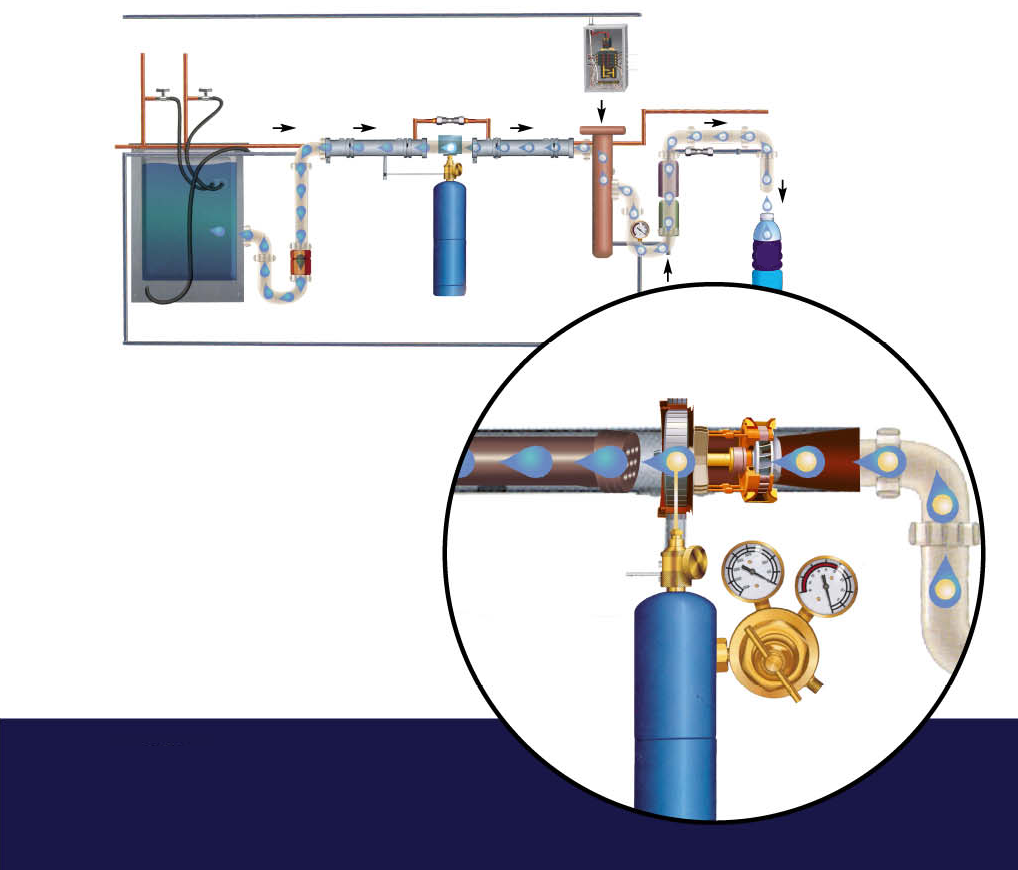
A SYSTEM OF SATURATION AND FIXATION OF OXYGEN
This system constitutes a patent. The technological innovation permits to integrate and fix any gas into any fluid: for example, oxygen into water.
Principally, water is transferred into a reservoir then cooled to the freezing point by way of thermal exchangers. We can thereafter, saturate the gas in a system of exchange between water and oxygen by micronizing the fluid into nano-particles, which we stabilize by a triboelectric induction charge surpassing many million volts. This process results in the capture and fixation of oxygen molecules in the water. By this repetitive bombardment of the electrons, our new fluid becomes antioxidant and acquires uncommon properties.
1. Application research projects stemming out of the Master Patents
We propose to put in place research susceptible to produce significant results in the following domains:
1.1 Worldwide distribution of oxygenated Water
The need to provide our populations with water containing a higher level of oxygen is urgent. This technology is at our disposition protected by patents all over the world. We must start implementing these water-bottling plants all over the 220 countries we can work with.
1.2 Too many children in the world need potable Water
We can desalinate water with the same unit we use to integrate oxygen. So in planning the oxygenated water distribution we should study at the same time the supply sources of water for all villages in the world where there is not enough drinkable water.
We can predict that the level of the oceans will rise due to the melting of the ice caps. Therefore we should desalinate the excess water to prevent the swelling of ocean waters that could flood many cities living at sea level, by pumping fresh water from the oceans.
1.3 The planet supply of oxygen
The activity of the phytoplankton in the oceans and the plants are responsible for the production of the oxygen we breathe. Since the Rio Conference in 1992 - http://www.un.org/geninfo/bp/enviro.html - we cannot escape to reflect on the disappearance of the two main sources of oxygen production on this planet. The plants are in danger of destruction by the industrial activities of logging in the rain forests. The phytoplankton is rapidly diminishing.
One thing, which is clear - is that oxygen is disappearing and we have to do something about that. We have a technology that could bring back life into the oceans and it should be paired with a gigantic effort to save all the plants that will be essential for the future of mankind.
1.4 A Worldwide Network of Cryogenic Centers
By establishing a catalog of fundamental plants of humanity (already well advanced) and putting an army of biologists and bio-chemists to go around the world and physically save these plants – we will need a network around the world of these cryogenic centers to put them in a state of preservation. A few of these plants must be saved URGENTLY. We may need to create a fleet of aircrafts all equipped with cryogenic labs and be on the spot in matters of hours to preserve newly discovered plants.
The same centers would be used in coordination with all maternity wards in every single hospitals in the World, in order to collect and save the placenta cells as well as the umbilical chord of new born. Fundamental discoveries on the nature of life frequencies will allow in the future, curing most of all illnesses if we possess the initial frequencies of the individual present at birth in the chord and placenta.
The same LIFE data base system would be put in place for both the plants and the mother cells.
While we preserve those plants we should protect them from future destruction
Some of the plants in danger of extinction have exceptional medicinal properties. Some of them disappeared because they had been chased all over the world to cure people.
We discovered that we could save those plants from future destruction if we simply apply the discoveries about frequencies – and create another new state of the Matter: the Crystal State. We demonstrated that we could take an organic cell from a plant, put it in the form of a crystal – take the same crystal and energize its frequency – and through a small machine of ours – have the live organic molecule appear into a liquid – directly from the crystal. This should be the new way of preparing medicine.
1.5 Starvation and food production
We need a more powerful way to grow food – a method in full agreement with the biogenetic potential of all plants. We must stop the artificial way of growing them and put human life at risk.
Here is a picture of how we grow for example tomatoes in two months with a result of approximately 400 kilos of tomatoes per plant – without any chemical boosting - just the absorption and penetration property of our oxygenated water.
What you see in this photo can be reproduced with almost any plant. The root is where everything happens, and if you have a power of absorption the plant grows faster and healthier.

2. Construction materials in particular: Cement
Another application where we can use the penetrating power of our water would be in the construction of a better kind of cement. The Romans knew how to do that – our cement these days will last some 40 to 50 years and will start cracking.
In the last few years, the cement industry managed to develop new materials more capable to respond to the demands of the market, namely in the production of anti-seismic buildings, as well as of other natural disasters like cyclones, tsunamis, tornadoes, torrential rains and in particular the acidity of those rains and the consequences on the longevity and durability of the material.
To do so, the industry started adding components like plastics or natural components like bamboo, to augment the flexibility and durability of the cement. They also added materials like glass, different forms of crystals or silica, different metals to augment its resistance, and until the last studies they equally thought of adding ionic balls that favor the formation of cavernous chambers that greatly enhance the R thermal coefficient.
Taking into account the multiple experiences related to our Master Patents, we estimate being able to produce a radical change of the different properties of cement, by the addition of a number of different materials that will have first been treated by our technology.
We propose to modify the process of fabricating cement, by the addition into the mixing water of a dissolution integrating a gas (N2) or another gas that would maximize the reduction of the surface tension of the electrons, with the following consequences:
An augmentation of the porosity of cement in the form of micro-cavernous bodies that would alter the nanometric properties of cement, giving it a new thermal, mechanical and acoustical resistance.
The mixing of new products like plastics components having been treated with an integration of specific gas, would have the effect to augment by another factor, the thermal, mechanical and acoustical resistance, but more importantly in relation to anti-seismic properties, an extra added value: flexibility
Cement able to possess all characteristics of expansion, contraction and elongation – close to terfenol (magnetostrictive property).
And if we were to push the reasoning in the direction of materials having new properties still unknown to this day for cement, we could create a « mnemonic cement » controlled by a series of software systems that could produce the following properties:
Filtrating properties with selective characteristics (by the integration of positive or negative ions) – a breathing cement that would act as prevention of respiratory diseases by allowing the entry of oxygen or the elimination and/or blockage of toxic gases like radon and/or other natural gases; anti-bacterial properties by the integration of metals that have been transformed by our technology to prevent légionellose.
Augmentation or reduction of the conductivity of the cement according to the needs, like for example a Faraday cage or self heating or isolating cement floors etc.
We could obtain acoustic cement capable of diffusion of harmonic waves or on the contrary obtain the complete sound proofing of buildings by the introduction of nano balls with ionic capabilities.
It would be equally possible to fix crystal liquids in order to augment the luminous absorption properties that would serve as optical bearers for the diffusion of messages in anti-seismic or anti-fire buildings.
It would be equally possible to fix crystal liquids in order to augment the light reflective character that would serve to control the repulsion of molecules, be they acids, pollutants, caloric or acting as a thermostat for the maintenance of thermal variances.

3. Major reduction in size and cost of electric batteries for electric cars – while still augmenting their power.
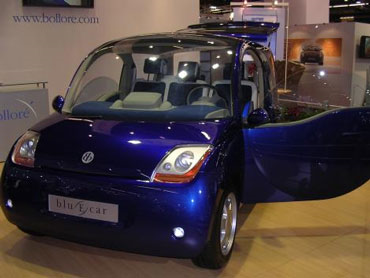
The following text in Abadi character font is an ad-lib translation of a text published in Notre-planète.info on 20/11/2007, 14:59.
The electric car does not stop arriving. The bug is the battery. The best available made with lithium, are too expensive and quite bulky. Their price can be afforded for a luxury sports car like the Blue Tesla Roadster that promises 100 km/h in less than four (4) seconds. But for the main streetcar owner, we are still expecting new varieties of batteries more compact and less expensive.
Moreover, even the best batteries have two major inconvenient. First they can only be recharged for a limited amount of « cycles ». The order of magnitude is in the thousand. This means that having recharged your battery approximately 1000 times, the battery is good for recycling. Which makes it an expensive consumer good. Second these batteries take a long time to recharge: in the order of one hour and five minutes at best. On top of the fact that partial charges reduce their lifetime.
A new electric car, the « Blue Car » should be put in the market in France around 2009. Will that be a new failure charged to the electric car? It does not look this way for this new city dweller that proposes true performances and will diminish the pollution of this problematic environment.
The automobile = dependence to petroleum and pollution.
In France, the transport industry depends up to 97% from petroleum resources (IFP, 09/2006) with a varying price (more than 150 dollars per barrel in Sept 08), and the passengers and goods carried are really the first consumer.
At the environmental level in 2005, the transport sector emitted more than 140 million tons of CO2, nearly more than 20% from 1990: with one quarter of the emissions, it is the first contributor of CO2 in the country, in front of the residential (23%). Personal automobiles generate almost half of the emissions due to transport and at the end represent 13,3% of the CO2.
Moreover, the automobile represents the first source of atmospheric pollution in major cities like the Paris agglomeration and is a major participant in the cause of illnesses like asthma, chronic bronchitis exceptionally in the weakest population.
Having to face the huge challenge created by the degradation of our environment and our health, the automobile sector having been for too long chained to the petroleum providers must renew itself towards much less polluting technologies while convincing their consumers of the necessity to change.
The electric car represents without a doubt the best actual compromise to insure mobility while significantly reducing the emissions of pollutants. A more rational and reasoned use of the automobile on a daily basis remains equally an excellent action lever.
A little bug worth signaling: they are very slow to accelerate. When we push on the accelerator, the battery seems to be unable to supply all the amps needed to accelerate. This is why all electric cars are equipped with an essential accessory: a very big capacitor or super-capacitor.
A capacitor stocks electricity directly, on the form of electric charges and will restitute them instantly. It will recharge itself in matters of second. And we can charge and discharge it by the spoonful a million times. Why not a super-capacitor…it would be like a battery but a thousand times better? If this were the case why not equip our cars with a super-capacitor instead of a battery? Where is the bug?
The hic is in the density of energy. A super-capacitor stocks much less W/h per kilo (and by liter) than a good battery. Except….
We dispose of a technology stemming out of our Maser Patents that would be able to utilize a super battery/capacitor. That battery would certainly have the advantage to stock at will all the necessary kilowatts while being able to condense all necessary energy of a powerful and performing car.
This battery, we are absolutely convinced, would surpass every thing being offered in the market and we could make a demonstration of it in a very convincing and rapid way.
3.1 A Revolution in the transportation industry with a portable source of energy
Considering the fact that our Master Patents have already demonstrated in fact a great number of possibilities, (see page 4 on the Reduction of the surface tension of electrons) we can predict the following:
A much smaller battery
Having an almost unlimited autonomy
Largely more powerful
The capacitor part of the battery could technically keep the battery permanently charged
Having a longer longevity
An increased flow of ionic exchange allowing for rapid accelerations
Entirely recyclable
Without toxic products and/or heavy metals components
Most probably less expensive than the existing acid batteries
The ionic mobility!
Triboelectricity is electricity developed by friction and transported by the electrolytes of water. When placed in an electric field living between an electrode and a ground, and fed by an electron cannon, the ions of a water very diluted in electrolytes are submitted on one part by an electric force of attraction, and on the other part by a breaking force due to the viscosity of the considered water.
The electrons reach a constant limit speed in order to obtain ionic mobility. Most of the ions have neighboring mobility except the ions H+, OH- and O2 that are the most mobile ions. Generally, the smaller ions, the lighter ones and those most charged in layer of electrons, are the most mobile. We know that the charge of the particles is due either to ionisable regroupings or to absorbed ions. By placing a ground and an electrode that bombard the electrons by electrostatic fields in the direction of the ground in a liquid like water, there is a migration of the particles that are submitted on one part to an electric force of attraction, and on the other part to a breaking force due the viscosity of the environment.
The electrons reach a constant speed, which is a function of their form, their average masses and most of all their effective charge. This mobility depends also from the viscosity, of the dielectric constant of the environment and of the temperature. The closer ions from the particle are therefore strongly retained by electric attraction. They constitute a fixed and adhesive layer that displaces itself with the particle, lowering its real charge while forming a sheath around itself. The concentrations of these ions (electrons) diminish rapidly when rapidly moving away from the particle (H+, OH-, O2…). Therefore, exists a form of cloud around in layers of diffused ions of the first layer of fixed ions that do not adhere to the first layer of fixed ions.
We utilize this entire phenomenon at the same time as the dissolution of the oxygen gas. It follows a fixation of the oxygen between the fixed and diffused layers of the new repartition of electrons. This new repartition of electrons is caused by an important feed of electrons generated by our electron generator, which bombards the oxygen molecules towards their dissolution.
Moreover, this concentration of electrons renders our water anti-oxidant, therefore neutralizing free radicals of the human body. One exceptional way to combat illnesses related to aging, like arthritis, arteriosclerosis, kidney stones, liver stones, cancer and all deficiencies.
Orientation of our equipment:
The aim of our equipment is not to unite two liquid fluids but to create a fixation of a gas into a liquid according to the application to be demonstrated. Our gas mixer and micronizer – before the operation of ionization – simply has the effect to break the bubble of gases brought into the process, in very fine micro balls to impregnate them and disperse them into the liquid to be treated, in the most homogenous manner possible before to even try a fixation of the gas.
Most of the methods we know on the market who attempt to integrate gas into fluids, you can observe a dissolution of the gas into the fluid, but a few minutes later after the observation of the dissolution, you immediately observe a degassing which is the inverse mechanism. It is exactly the action of the law of Henry on the absorption and degassing of a liquid under the influence and presence of a gas according to the temperature and the pressure. We do not follow Henry’s law completely because we speak here not only of a gas dissolved but also of the absorption of a gas with the intent to fix it semi-permanently to a liquid under the influence of a triboelectric ionization system.
We utilize gases like oxygen to absorb them and fix them into water. We do not create X Rays or UV Rays. We do not create free radicals; we neutralize them under the effects of a concentrated electrostatic field, under the effect of an electrostatic crown and not a plasma effect. We make the electrons travel via a triboelectric system. Triboelectricity is the transfer of electrostatic charges between two bodies or two atoms of a same element or of different elements. Hence, it is by this physical methodology that the transfer happens, provoking very weak electrostatic halos around the electrode points. We also have a kind of accelerator and concentrator of electrons to facilitate the Triboelectricity.
To obtain a significant electrostatic triboelectric charge to be transmitted to a conductor material and to our water, this requires three fundamental ionic conditions: an ionic contact followed by a separation and finally an accumulation of an electric charge.
In order for two surfaces to attract themselves and create a contact, it is necessary that one of the surfaces is full of electrons and that the other surface be deficient in electrons. Namely, electrically negative and positive or as it is the case in our situation electrically neutral while accumulating energy to transfer it in a negative or positive manner according to the starting charge of our power supply. The quantity of charges depends on the electrical conductivity, on permittivity, on the number and density of the points of contact, the speed of the contact points, the temperature, the humidity or the kind of fluid, the kind of surface and very many other factors. But there are many other cases where the accumulation of charges does not require a contact but rather an induction by exposition and rapprochement of the two elements. This seeding (primer) is exactly what we do.
After the contact situation or the transfer of charges by induction, the surfaces will live a separation. For them to live this separation, the contact must mandatorily create a situation of neutralization of the ions. This important perturbation allows partially one of the surfaces to become neutral by a transfer of electrons. Once the neutrality is being accomplished, the surplus of ionic charges of the other surface forces a situation of separation. Here is an interesting relation.
If we apply the contact phenomenon and the separation phenomenon in a very conductive material, we observe a great mobility in the transport of the ionic charge, a slow activity of the mechanical separation of the bodies and an important partial neutralization of the charge. In the contrary case, a weak conductivity and mobility of the charge with a rapid separation of the bodies will result in a total depletion of the quantity of the neutralized charges.
After this separation, some charged ions appear and they accumulate on and into a body. In this case an electrostatic discharge is possible, with a body that has a sufficient potential difference in order to neutralize this charged mass. It is diffusion by polarization creating our effect on the electrode points.
Following the use of Triboelectricity and based on the demonstrated principles in our patents, we can state the following:
The reduction of the ionic friction of the electrons allows us to anticipate definitely an augmentation in the speed of ionic movement of the electrons therefore an accrued power of transmission of the energy towards the motor.
A compromise between longevity and demand of power can be attained by using more acid solutions that would augment the fluidity and the ionic exchange by another factor to the limit of ten times. An acid solution will corrode the electrodes more rapidly than a neutral solution. But here again, another technological solution in our disposition in the production of humidifier cylinders would allow us to modify the plates in the battery by a treated metal and the electrode would be protected against deposits of calcium.
By reducing the surface tension of electrons, we augment the output of the battery – and consequently for a requested power of 130 Km/h and an autonomy of 250 Km and a recharge period of 1 hour, we could reduce the dimension of the battery by a factor of 5 at least, making the battery much lighter in weight, less expensive, and shorter to recharge by a factor of at least 1000 times.
The utilization of a triboelectric charge would facilitate even more the transmission of ionic charges.
A plastic case for the battery that would have been treated with our gasification process could also augment by another factor the ionic movement of electrons, making the battery even more powerful.
The number of recharging cycles will be limited to its minimum.
The battery will be entirely recyclable and will not bear any toxic materials or heavy metals.
4. The transformation of Sludge into Crude or Diesel
While we are in the domain of energy, and while we will integrate the Electric Battery in all existing vehicles – there will still be a significant amount of other transportation that will use fossil fuels.
We therefore need to eliminate one of the most drastic contributors to pollution of our planet – the Sludge, a by-product of every single fuel production. The producers simply discard it in nature with disastrous effects. The whole McKenzie River is now dead.
Our tribo electric oxygenator can transform this Sludge into Crude or Diesel. The ratio is a production of 10 barrels of Crude or Diesel for every single barrel of Sludge. A pre-treatment of the Sludge is necessary similar to the one Mother Nature presided over throughout millennia.
Once the transformation is completed we would clean this new crude in the same manner, as we would do for the ordinary petroleum.
4.1 The Cleaning of the Petroleum molecule
The explosion of the petroleum molecule is not very clean. It produces about 25% of the world green gases. By integrating oxygen into that molecule, it would play effectively in the hands of a better and cleaner explosion (because of the augmentation of the temperature of the explosion) and by the adding of certain new other gases – we could reject only water vapor. We would reduce fuel consumption as well possibly by a factor of three.
5. Recycling of Filters
The recycling of commercial electronic steam humidifier cylinders, offering an ecological and economical alternative to end-users.
The market is actually dominated by manufacturers of commercial steam humidifier, who are selling replacement cylinders every 6 to 12 months. Until now, the manufacturers kept the market captive and no retrofit alternative exists for new cylinders. We own a unique patented process for recycling these cylinders with new non-magnetizable electrodes. The recycling of the cylinders and the electrodes manufacturing was actually done in Ste-Therese, Quebec, Canada.
The new retrofit electrode allows cylinders to stay in line much longer than the one supplied by the original manufacturers. The resistance to scaling is exceptionally good, drastically increasing the efficiency and bringing the cost of operation down. The major advantages of recycled cylinders are:
The cost of a recycled cylinder is much less than a new one;
The efficiency of the humidifiers and the air quality is improved by minimal scaling inside the cylinder;
The electrodes have a life spans of to 2 to 3 times longer than originals installed by original manufacturers;
The electric consumption of the recycled cylinder is much more equilibrated reducing the cost of operation.
Steam cylinders on the market today have more or less the same weakness:
- Galvanize steel or stainless steel type 400 or 430 used for electrodes act like magnet to scales and corrode rapidly. The cake build up of scales on the electrodes minimize the surface contact with the water, resulting in important energy lost:
Scale accumulation increase energy demand exponentially. Half an inch of scale is equal to 70% of energy lost.
Accumulation of scale promotes bio contamination (legionella, eukaryote, etc.);
Electrodes service life is mediocre and often short;
The steel used, often cause electric arc adding to the destruction of electrodes and cylinders.
All steam cylinders must be replaced with new ones after a year and often months in line;
All steam cylinders are made of polypropylene, a non-biodegradable plastic adding to the cost of disposal.
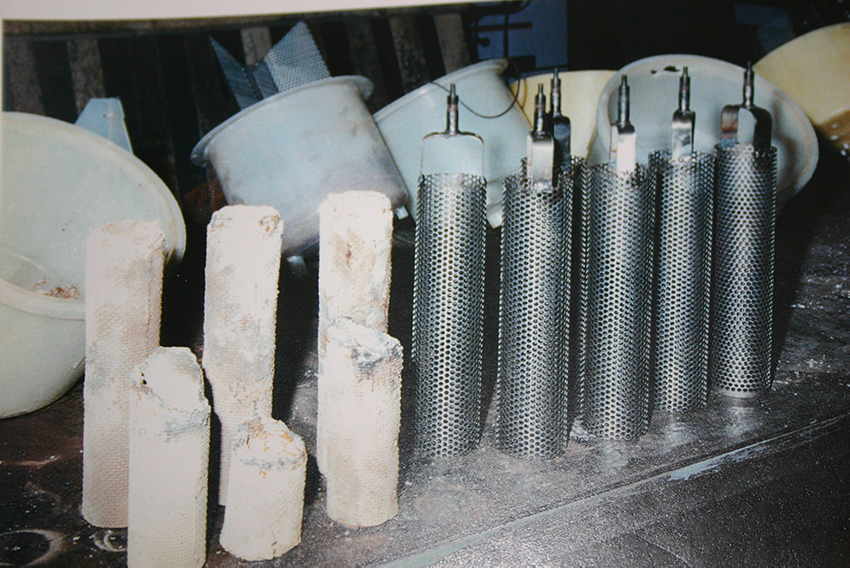
This is a market for every major building in the world.
6. Strategic Developments
Humanity is in urgent need of two new fundamental pieces of equipment:
The Super-Microscope – black bottom
The Super Computer available to most laboratories in the world. Super chips are needed to do the previous two pieces of Equipments.
6.1 The Super-Microscope – black bottom
To pursue fundamental research on the live cell we need a microscope capable of seeing on an optical level what is going on at the level of the cell itself – in three dimensions and in color - LIVE.
When we inject medication in the case of cancer or malaria or for that matter in the case of any other disease – we must be able to SEE what is happening. The interaction with the tissues and the chemicals of the body of any live creature must be available to a human mind observer.
6.2 The super computer
For that purpose we need a super computer. A company in the US, Thinking Machines Incorporated developed a 64 000 parallel processors destined essentially to solve VISION problems in Artificial Intelligence. One of my research companies in the field of semi-conductors (Silic-Art Inc.) was in Joint Venture with Thinking Machines. The purpose of the Joint Venture was to develop both the software to design chips and manufacture chips that would be more powerful. We were successful at both. We need that super-computer to develop the super-microscope.
6.3 Super-chips
Today’s chips will operate in the range of one to three Gigahertz per second. A few billion operations in one second.
We are predicting that with the use of our Master Patent applications in the reduction of the surface tension of electrons, we can produce chips in the range of 120 Gigahertz per second.
WE WILL THEREFORE BE ABLE TO PRODUCE THESE EQUIPMENTS AND BRING INTO LIFE THE REVOLUTION OF NANO-TECHNOLOGY.
WITHOUT THE EXISTENCE OF THESE CHIPS, NANO-TECHNOLOGY WILL CREEP SLOWLY IN THE 21ST CENTURY.
WE WANT NANO-TECHNOLOGY TO BE VIBRANT AND WIDESPREAD SO ITS BENEFITS TO HUMANITY WILL TAKE EFFECT SOONER.
7. Micro-biology and Health Projects
I would like to start by saying that the following projects must be considered as the most advanced form of knowledge in the field of microbiology. I will present these in the form of Solid Hypothesis that could be well confirmed by further research. The work of Gaston Naessens, on Somatids, became the focus of attention
http://video.google.com/videoplay?docid=-2124381128602218844#
already forty years ago, after the invention of his extraordinary microscope. He became a source of inspiration and guided very many of our experiments. Mr. Naessens is still alive today and his sons are pursuing his work. We intend to pursue his work systematically in the direction of the super-microscope and the Somatids. It touches to the fundamental question of what constitutes LIFE itself.
In the course of our work on plants, we received from a partner interested in all the plants of the world, a little bag filled with a bunch of some 200 seeds of a plant – corchorus olitorius.
The challenge was to try to revive some of them – put back life into those seeds in order to restart a colony and a new generation of this precious plant.
Fig 1. The revived colony
At the point when we were desperate and convinced that we would end up destroying the whole bunch of seeds before we could succeed, we came close to abandon and reserve these seeds to someone else who could give another try at it.
But as the picture above shows, we were successful at reviving a couple of seeds and could grow in our nursery some three thousand new born.
Fig 2. The Nursery built and designed for this research
We then proceeded to a number of plant extractions in order to understand – through the microscope what we could see in these. That plant was full of Somatids. Let us look at the microscope in order to put into context the purpose of the work.
8. A unique microscope
The principal difficulty in the observation of Somatids and the forms derived from them has always been in the resolution of the optical microscopes that are the only tools that will allow the observation in vivo. Even today, the best optical microscopes will allow a magnification of 1800 times with a resolution of 0.1 micron. Electronic microscopes are capable of magnification millions of times higher with resolution of 30 to 50 angstroms – but the objects you can observe must be dried so that only their skeleton are observable. The microscope of Gaston Naessens allows magnifications that can reach 30 000 times with a resolution of 150 angstroms.
Two luminous sources, one incandescent with a wavelength if 3300 angstroms, the other ultraviolet of 1850 angstroms, enter in beat and produce a third wave length. This wave goes through a monochromatic filter that produces a ray. This ray is then submitted to a magnetic field (Zeeman effect) that will amplify it and produce multiple other parallel rays. These rays go through Kerr Cells that will augment their frequencies. This luminous source, invisible to the human eye, will hit the lamellae. The microscope then reconstitutes the image.
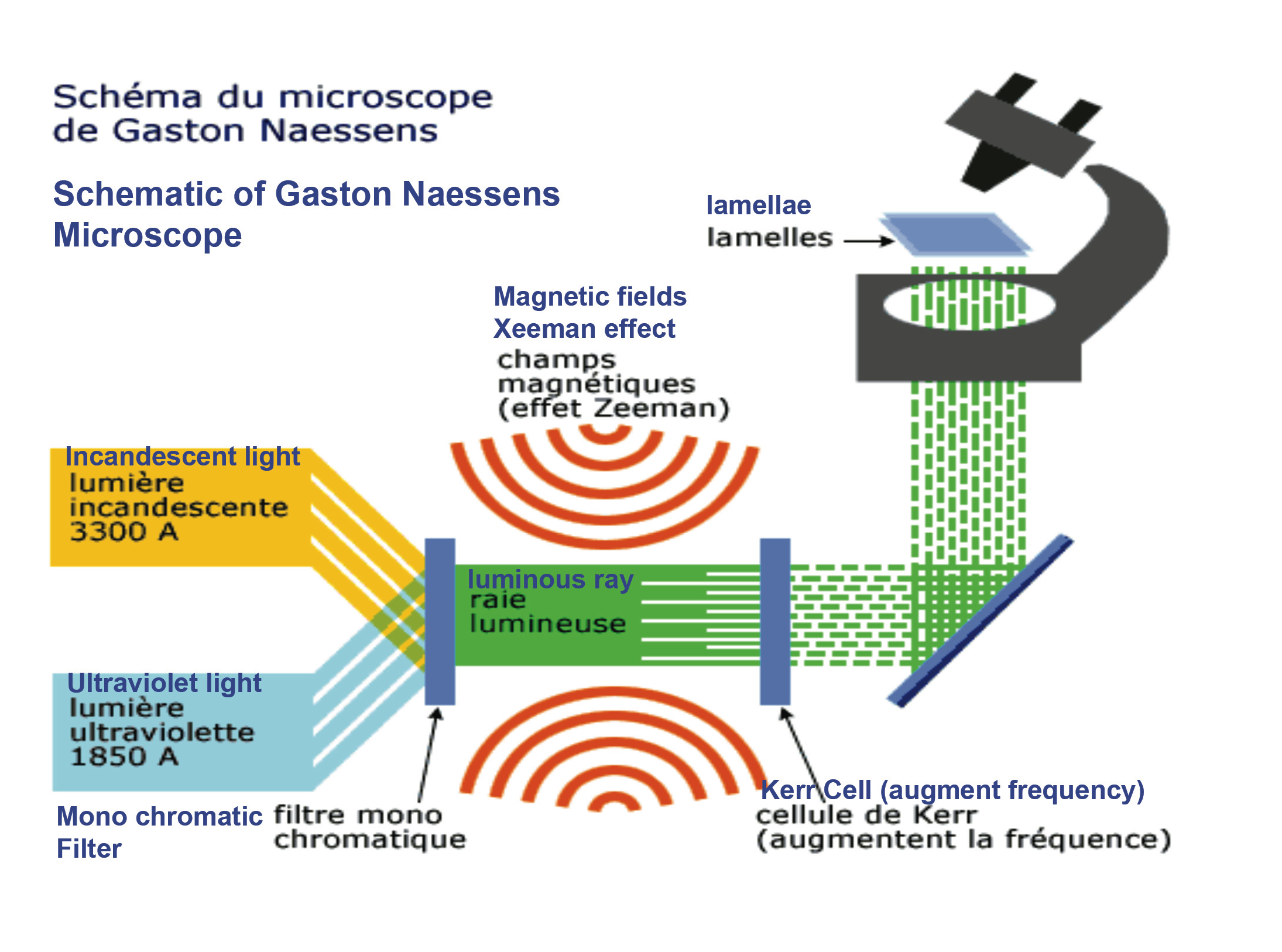 The principle of Naessens’ microscope is that the more the luminous wavelength is short, the more we can see infinitely small details. Through the use of this microscope we were able to observe this little particle (called Somatids) and combine it with the penetrating power of our oxygenated water to treat a number of different diseases.
The principle of Naessens’ microscope is that the more the luminous wavelength is short, the more we can see infinitely small details. Through the use of this microscope we were able to observe this little particle (called Somatids) and combine it with the penetrating power of our oxygenated water to treat a number of different diseases.
9. Experiments with Malaria Patients
We were able to treat a few hundred patients all in their final stages of life – with a combination of Somatids from certain plants mixed and treated with our oxygenated water. The penetrating power of the solvent (water) was sufficient to cure 100% of all dying patients within a period of 2 days in the best case, and in 10 days for the worst. This particle being part of every living cell does not cause any secondary effects. We could not see a trace of the Falsifarium virus in the cells; we were able to film this phenomenon.
10. Treatment of cancer
Some significant results were obtained with dying patients in their terminal phase of cancer, patients in a state of coma, were revived and a 95% reduction of the cancerous cells were observed in many patients. The particles (Somatids) involved here will destroy cancerous cells as well. But we observed a dramatically different result. It looks like we need to understand other phenomena involved in cancers, which are different than in Malaria. We were getting only 60% rate of success but not on every cancer.
There is definitely a range of frequency involved and this research needs to be completed. We could reach 90% cure of cancer from the observations we made so far. But lack of funds and lack of the super-microscope was a major impediment.
11. The Education and School Project
After my work with Professor Jean Piaget in Geneva in 1964-68, I was invited to join the team of research in Education inside the Artificial Intelligence Laboratory of MIT.
During my stay in Geneva I had the pleasure of working with the co-director of the Artificial Intelligence Laboratory from MIT, Dr. Seymour Papert, who was visiting the Center of Epistemology of Dr. Piaget for a whole year.
Piaget had taught us that Children are essentially active in the process of constructing a set of very complex intellectual structures that obviously were not present in their early years. It was also obvious that nobody were “teaching” the kids on how to elaborate these intellectual structures. The kids were doing that by themselves. It looked like the kids were expert at learning.
Question: If the kids were expert at learning, why would the school system insists on treating the children like if they were dumb. We teach them by words and if the kids do not repeat the same words we taught them – then the kids will have to repeat a whole year. The teacher believes that he is the source of truth – and the kids have to listen to the teacher. This pattern – with exception in very many areas – is the rule almost everywhere in the world.
We designed a new paradigm of school where kids would be surrounded by an environment where they would be invited in conducting projects. Not any project – not laissez faire – but a window of hundreds of different projects that have been thoroughly experimented for their quality in providing the kind of experience which is useful in the learning process.
We have a saying: “We learn by doing things – not by being told about them. But we are in a much better position to learn – if we have a few good ideas on how to do things”
So we centered our activities on projects that would carry the practice of good ideas for learning. We call these ideas: Powerful Ideas. For example, learn how to break your problem into sub-problems. Or, if a problem is too difficult, try to bring it back to simple solution. Find good names to describe the actors, learn the difference between good naming that clarifies the situation with names that simply bring more shadow and confusion. If you do not understand, try to be the teacher to someone who would not know – in which case you elevate the standard of success – namely you cannot teach at 60% - you always need to be 100%.
When we were given the opportunity to experiment for a number of successive years this kind of environment, we were struck by the outstanding results of children.
Then MIT decided to build a new building on the Campus, called Media Lab and for the last 35 years they developed new projects that would bring the kids the kind of experience, which is useful for learning.
We are now ready to open schools throughout the world, because we have enough materials and tools to dress a school to receive the kids properly.
11. Intellectual property protection
1. Device and Method for Molecular Polarization in Water
Description | COUNTRY concerned | Patent No. | Date of deliverance |
Device and Method for Molecular Polarization in Water | USA | US6,451,208 B1 | 17 Sept. 2002 |
Idem | Canada | CA2,324,374 | 14 Octo. 2008 |
Idem | Europe | EP99911544.7 | National phase |
Idem | Brazil | PI9909415-0 | |
Idem | China | ZL9980586.8 | 25 August 2004 |
Idem | India | IN/PCT/2000,0049/MUN | |
Idem | Japan | 2000-5411002 | 25 May 2007 |
Idem | Mexico | PA/a/2000/009554 |
2. Treatment of Fluids
Description | COUNTRY concerned | Patent No. | Date of deliverance |
Treatment of Fluids | USA | 6,913,382 B1 | 5 July 2005 |
Idem | Canada | CA 2,406,379 | 18 Sept. 2007 |
Idem | Europe | EP 01923887.2-2104 | 27 Oct. 2002 |
Powered by Froala Editor
